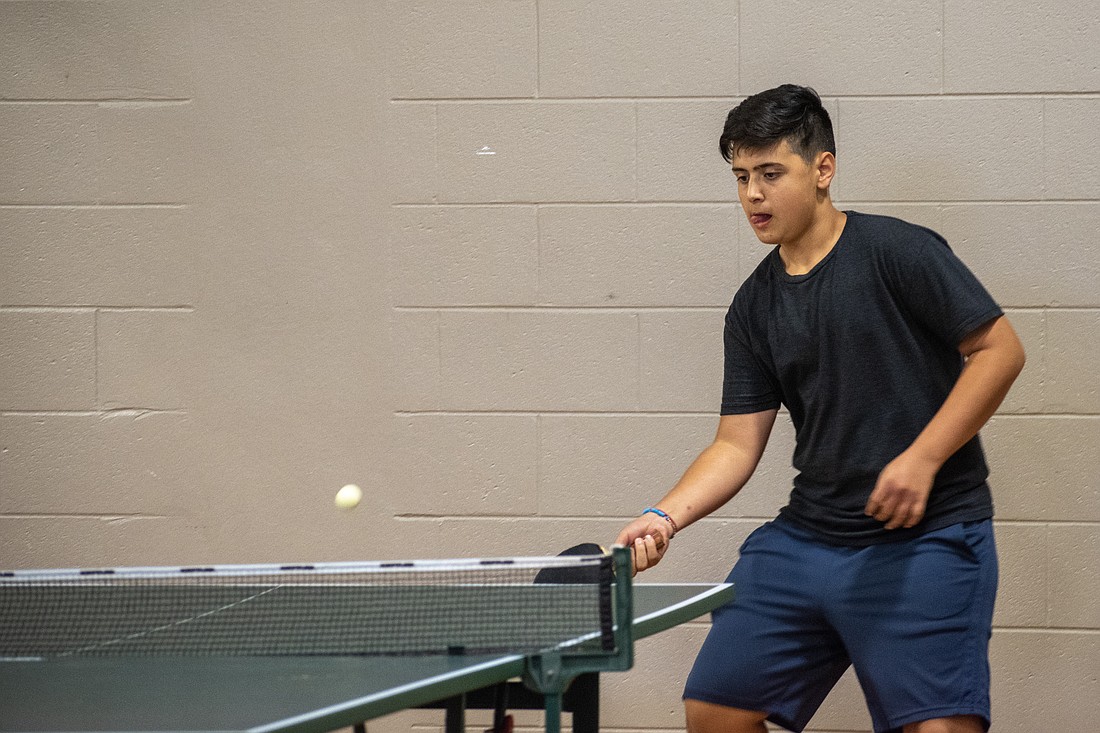- May 7, 2025
-
-
Loading

Loading

Whatever you see when you picture gym class in your mind, it's probably not how it looks anymore.
Whether your vision includes climbing ropes up to the top of the gym, or shuttling around on scooters just big enough to fit a sitting child, using your feet as a motor and racing your friends, it’s all different now.
So are the outfits. While schools will still encourage kids to put on clothes specifically for gym class, it can be a struggle, with many choosing to wear whatever they wore to school that day.
Kyle Mason, a gym teacher at Sarasota’s Booker Middle School, isn’t a fan of this particular change in attitudes.
Mason said he comes from an era where a school fitness session meant doing 50 push-ups. Now, he’s lucky if kids complete 30.
It’s a symptom of kids being less interested in being active in general and more interested in things like video games that are sedentary. That worries Mason. He’s made it his goal to get his students to see the importance of consistent exercise, especially when the individual units he is teaching are not their favorite.

“This is one of the only classes where the goal is to have fun,” Mason said. “They get to try sports they haven’t tried before. The hope is that something will hit a nerve and they’re like, ‘I actually love doing this.’"
Some of Mason’s more out-there experiments include table tennis, lacrosse, ultimate frisbee and spikeball. They also play traditional sports like basketball and soccer.
Spikeball is a sport that is essentially volleyball, but instead of hitting a large ball over a net, players stand in a circle and hit a tiny ball off a trampoline placed in the middle of the circle.
But it’s not all team sports.
At Booker, Mason said, gym teachers use Fridays as a planned period of general fitness training. This might mean a mile or half-mile run; it might mean completing fitness stations, like push-ups and sit-ups; or it might mean completing a PACER test, one of the lone relics from days of gym classes past still standing.
Brent Skogen, another Booker teacher, said the PACER tests, which are designed to measure aerobic capacity, work more or less the same as they always have: kids run back and forth across a 30-meter space, with the time they have to complete the run decreasing every minute.
Skogen said students are encouraged to remember their scores from previous tests so they can improve on them throughout the year.
“You would think they hate it, but we actually get good participation,” Skogen said. “Everyone is doing it at the same time, so no one’s going to get laughed at (for their score). Everyone’s going through it, and they do pretty well.”
As much as youth attitudes about fitness have changed, teachers are dedicated to getting as much effort out of their students as they can. There are no slack-off days, even as the year comes to a close.
At Lakewood Ranch's Dr. Mona Jain Middle School, sixth graders spent their final week of the year completing key tasks, teacher Andrea-don Griffin said. That includes completing a unit of instruction on dancing, which requires students to break into teams and complete a dance as a unit.
While that was happening, Griffin said, students were also reviewing field sports they had learned throughout the year and updating their overall fitness data, to see which students hit their goals for the semester. The well-rounded mix of activities makes sure everyone is interested in something.
“There’s a lot going on,” Griffin said.
Mason said the worst part of the youth’s new prerogative on gym class is the footwear: with so many students choosing to wear Crocs or slide-style sandals, there are certain activities they cannot do safely, like running for an extended period.
Mason said he has tried to discipline kids who refuse to wear sports-appropriate footwear, but it ultimately went against the lessons he is trying to instill.
“It does affect some of the things we do,” Mason said. “Do I want to let them play something and be physically fit, or do I want them to sit because they’re not prepared for class? That’s always the dilemma. We usually let them play because otherwise we’d have 50 kids a day sitting out, wearing Crocs. We tell them to put them in ‘sport mode’ (with the shoe’s strap raised on the heel) so they’re at least a little prepared.”
It’s a daily struggle to keep kids engaged and buy into the idea of exercise holding value, Mason said. Many will shut down the second they begin to sweat.
But if he’s able to change even a few kids’ minds by the end of a school year, it has been a success.
“We work on lifetime fitness,” Mason said. “We want them to understand what that means.”